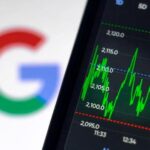American trend forecaster Gerald Celente issued a stark warning that the U.S. – and arguably the world – has entered a state best described as the dot-com bubble 2.0 in his April 3 update on YouTube.
According to Celente, the release of DeepSeek’s R1 model in January demonstrated the extent to which the situation in global markets has changed, signaling that China will be the world leader in artificial intelligence (AI).
Dot-com Bust 2.0, ready or not, here it comes. And it’s come. It was happening before DeepSeek changed the whole game, and again, as we said, China is going to lead the AI world. They have got 1.4 billion people. They’re very smart people.
The trend forecaster was quick to blame President Bill Clinton’s bringing of the People’s Republic into the World Trade Organization (WTO) for the U.S.’s innovativeness and competitive decline, opining that the Democrat ‘sold out’ the country to the North American Free Trade Agreement (NAFTA).
Bill Clinton sold us out with NAFTA and bringing China into the World Trade Organization and the lousy jobs at Target, Home Depot, Lowe’s… They’re shitty jobs. They don’t pay any money.
Why China will lead the AI world
Along with DeepSeek, Celente highlighted the rise in the proportion of Chinese youth attending university since the 1990s, which, according to his data, rocketed from under 20% to approximately 70% in 2025.
Economists and other experts from both sides of the spectrum have frequently described China’s entry into the WTO as a major, at best, miscalculation on the part of the U.S.
Indeed, a common assessment is that Western governments assumed that the People’s Republic would perpetually remain a workshop of the world without its own independent industrial or technological sector.
Are Trump’s tariffs a net positive despite the turmoil?
Interestingly, Gerald Celente spoke positively about President Donald Trump’s tariff idea, identifying the dilapidation of American industry and the near-total pivot to a financialized service economy as major reasons for the nation’s decline despite dedicating a large section of the video to the bloodbath the Liberation Day announcement caused.
What a day today, huh? How about that stock market in the United States and around the world? Not so good because of Trump’s tariffs, And again, I support the tariffs. I said the reason why, you know, bring tariffs but get rid of the federal income tax – because when we had tariffs, we had no income tax – and put manufacturing back in America.
Still, reflecting on the short-term impact of the new tariffs, Celente painted a picture of a clear market-wide correction. He highlighted the S&P 500’s 12% pullback from the February all-time high (ATH) while pointing out that the Nasdaq has not been spared either.
Harkening back to his previous assessment that the AI bubble will burst in 2025, the trend forecaster noted Nvidia (NASDAQ: NVDA) stock’s single-session 8% drop. Circling back to his argument about China assuming global leadership, he juxtaposed Tesla’s (NASDAQ: TSLA) falling share price and sales with BYD’s first-quarter (Q1) surge in deliveries.
The five stages of grief among the Western powers
Glimpses of the truism that has been prevalent for decades can most illustratively – and, arguably, most humorously – be tracked through a series of headlines from publications such as the Harvard Business Review, the Wall Street Journal, CNBC, and the Information Technology & Innovation Foundation (ITIF).
Over the years, the headlines and articles of said outlets have steadily moved from confident claims that innovation is effectively impossible in the People’s Republic to bold proclamations about China’s technology never assuming a leading role and, finally, to panicked calls for the West to try and stay on the bleeding edge while acknowledging the East Asian country has taken the lead.
Featured image via Shutterstock








